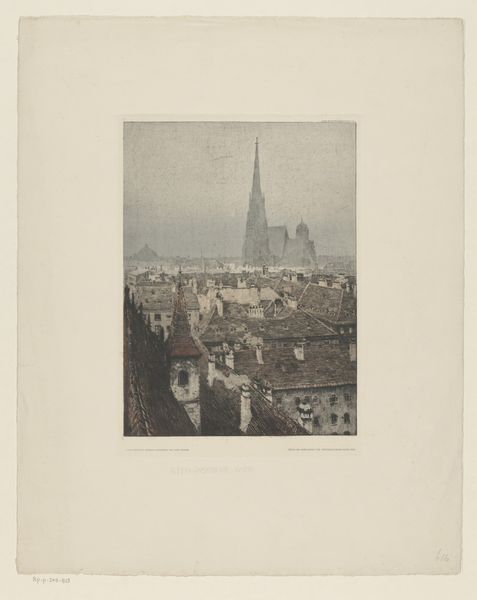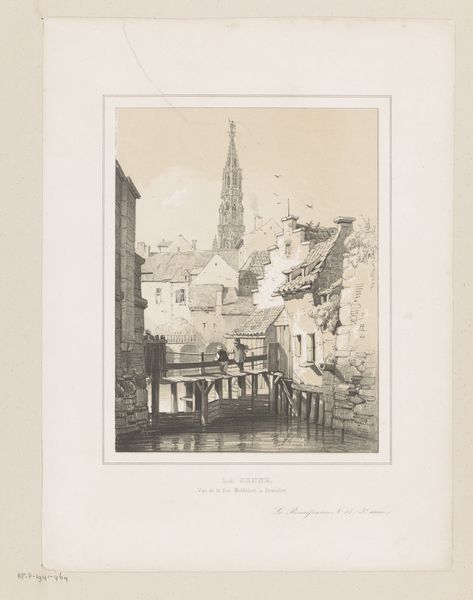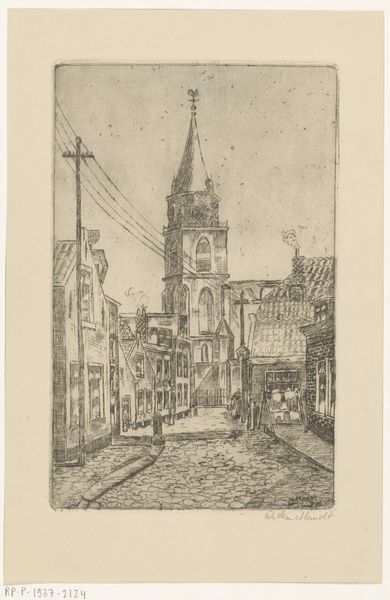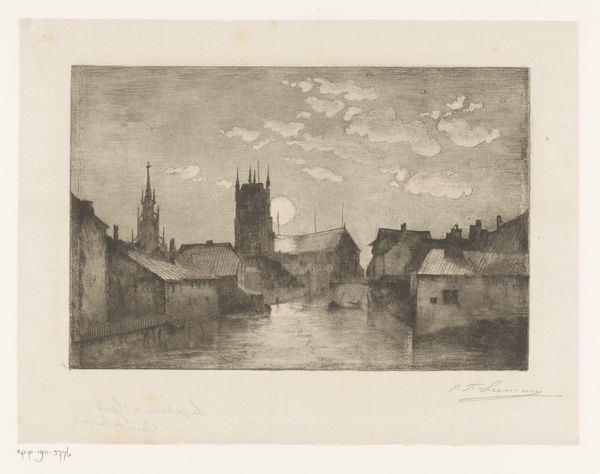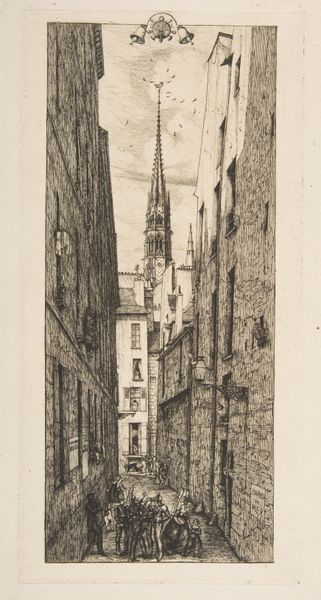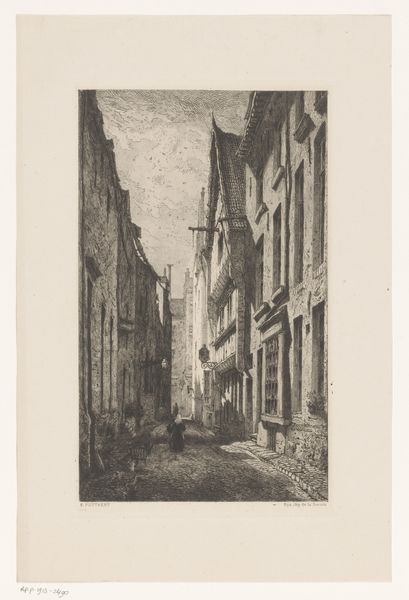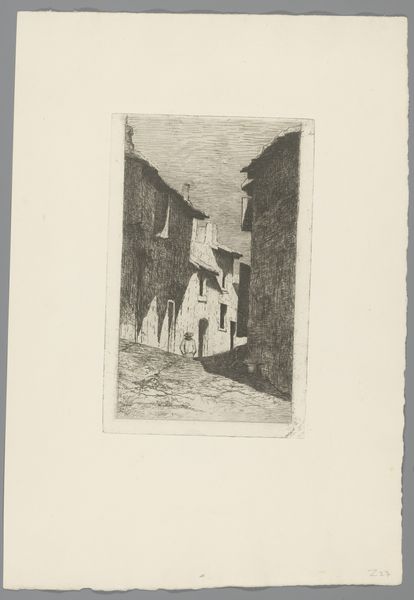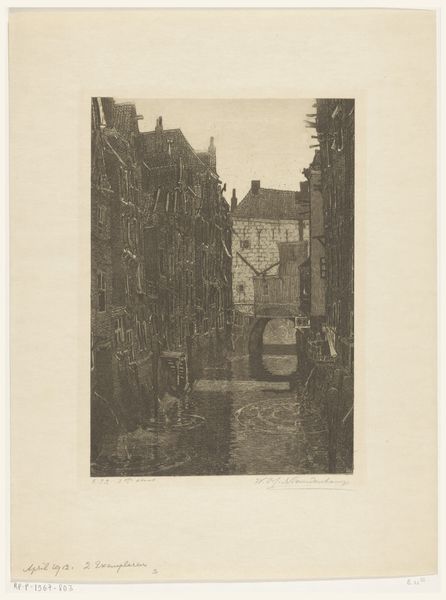
Dimensions: height 398 mm, width 285 mm
Copyright: Rijks Museum: Open Domain
Curator: Immediately, I'm struck by the somber mood of this cityscape, the way the moon casts an ethereal glow over the water. Editor: Indeed. What we're looking at is Eugène Cicéri's "City with River and Church Tower in Moonlight," from 1854. It's currently housed here at the Rijksmuseum. The medium is engraving on paper, part of a broader surge in printmaking's public role during that era. Curator: That the artwork is an engraving immediately suggests certain production values. Think of the skilled labor, the tools required. These things speak to an emerging market of art consumption. It isn't just about individual artistic genius, it's a commercial proposition too, an editioned image distributed and sold. Editor: Precisely. Engravings such as this made art accessible to a broader public, fostering a visual culture beyond the elite circles of painting. Prints like these democratized images. Looking at this from the perspective of institutional history, the Rijksmuseum itself played a key role in collecting and displaying such works, shaping public taste and the narrative of art history. Curator: I find the contrasts in material really interesting. The hard metal tools against the softness of the paper; it makes you think of labor division. Also, those stark contrasts of light and dark in the image echo the social polarities of the time. Is this Romanticism simply offering escape, or is it quietly reflecting those realities? Editor: It's likely both, I believe. The composition adheres to romantic ideals but still shows us something about urban life in the 19th century. Look at the buildings; they give us clues about social strata, about civic identity as visualized through architecture and engineering of waterways. The spire’s omnipresence hints at the pervading influence of religion, of course. Curator: Yes, and the distribution of such a scene, replicated and consumed en masse, influences expectations for what a city should represent – beauty, order, and also a slightly melancholic grandeur. The print itself shapes our view. Editor: An incisive thought. These images have historically served as agents, reflecting power and shaping identity and public discourse around it. Seeing it now gives insight into how museums preserve such material representations to build certain types of dialogue. Curator: An exchange between materiality and history is revealed. Editor: Yes, it is an interesting piece in that regard, definitely.
Comments
No comments
Be the first to comment and join the conversation on the ultimate creative platform.
